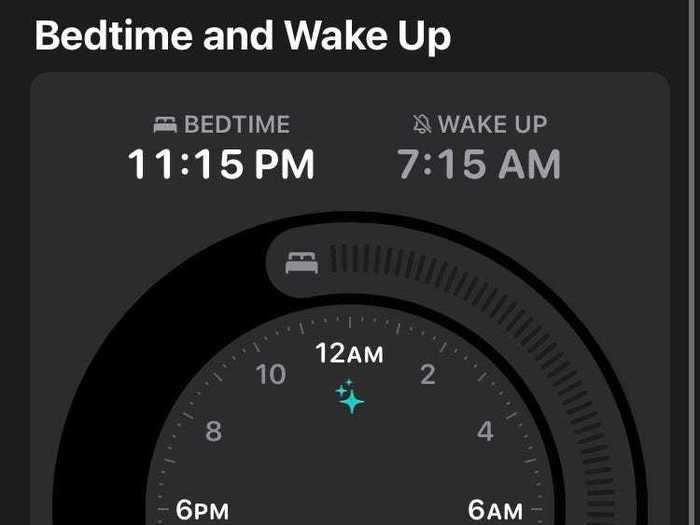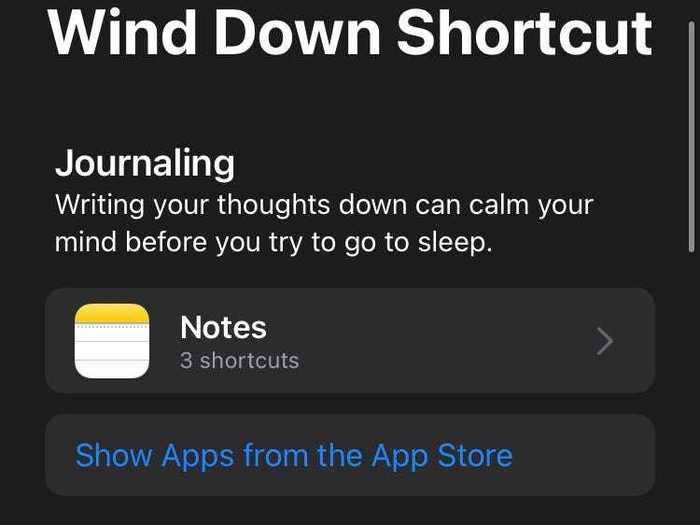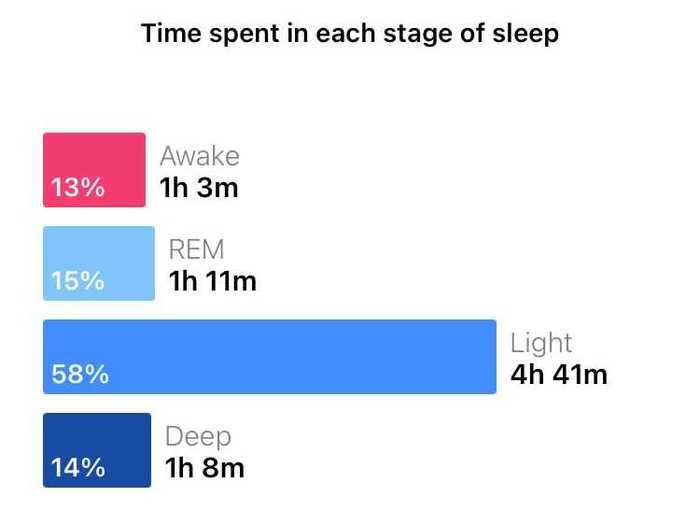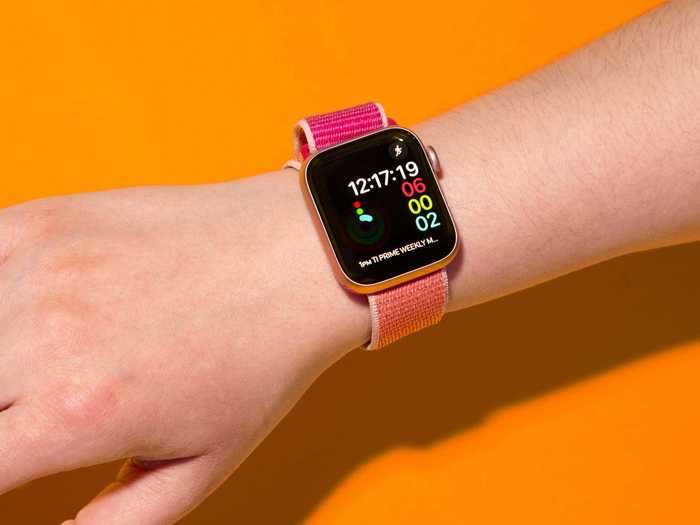Crystal Cox/Business Insider
- The Apple Watch will finally get native sleep tracking through a software update later this year.
- The Apple Watch will be able to measure the time you've spent asleep and awake and help you prepare for bed.
- But Fitbit offers more comprehensive metrics and, more important, longer battery life — making it much easier to track your sleep without scrambling for a charger.
When Apple's watchOS 7 update launches rolls out later this year, the Apple Watch will finally be able to monitor your sleep — a capability that has only been possible by installing a third-party app until this point.
The addition addresses one of the Apple Watch's main shortcomings compared to other fitness trackers like those made by Fitbit.
Given Apple's big push into health over the past several years, it's no surprise that the company is focusing on new areas like sleep. But if you've used a Fitbit device in the past, don't expect the Apple Watch's sleep tracking experience to be a direct comparison.
The Apple Watch is more limited in terms of the metrics it tracks during your slumber. But most importantly, the Apple Watch's battery life isn't as long as that of Fitbit's smartwatches and wristbands, which can make it challenging to get through the day without scrambling for a charge after wearing it overnight.
Apple's sleep features, rather, are more focused on the entire experience of sleep, meaning it helps you prepare for bed rather than just tracking what happens once you're asleep.
Apple hasn't said when its watchOS 7 software will officially launch, but the public beta is available today. If you do plan on trying the public beta, keep in mind that it's not the final version of the software so you may experience bugs. And you also won't be able to roll your watch's software back to the previous version.
Apple typically releases the final version of its new watch software in the fall.
Here's a closer look at what it's been like to track my sleep using the Apple Watch.
First, here's how the Apple Watch helps you get ready for bed.
A screenshot from the iPhone's Health app
Lisa Eadicicco/Business Insider
With iOS 14 and watchOS 7, Apple wants to help you fight the urge to pick up your phone when it's almost time for bed. You can set a bedtime in the iPhone's Health app, which can kick your phone into Sleep Mode automatically when the time comes.
Sleep Mode turns on Do Not Disturb Mode to minimize distractions before bed. It also locks the Apple Watch's screen so that it doesn't turn on when you move your wrist during sleep.
You can choose to have Sleep Mode turn on manually or at your set bedtime.
Aside from your predetermined bedtime, Apple also offers an option called Wind Down, which lets you set a routine to help you get ready for bed.
A screenshot from the iPhone's Health app
Lisa Eadicicco/Business Insider
This can include launching a playlist or podcast to listen to before bed, or an app for journaling or meditation, as well as triggering a Home scene to turn down your smart lights. In addition to launching a routine, Wind Down also turns on sleep mode.
During my time using watchOS 7 and iOS 14 so far, I set Wind Down to begin 45 minutes before it was time to head to bed. I appreciated the notification-free lock screen and "Sleep Well" greeting on my iPhone.
But kicking my phone and watch into Sleep Mode didn't necessarily stop me from reaching for my phone to check my email one last time before bed or scroll through Instagram. I often found myself twisting the Digital Crown to unlock my watch and get one last look at how much progress I made toward my fitness goals before calling it a day.
When it comes to sleep tracking, the Apple Watch mostly measures the amount of time you spent asleep.
A screenshot from the iPhone's Health app
Lisa Eadicicco/Business Insider
The Apple Watch can monitor the amount of time you spent in bed and the amount of time you spent asleep. That can enable you to see how much rest you actually got versus the amount of time you spent in bed.
It also tells you what time you fell asleep and what time you woke up, and you can view these metrics for each night you've tracked as well as trends over the past week and month.
If you want to see how your average sleep time compares to your sleep goal, just tap the Sleep Goal button when looking at your data.
You can also view a summary of your heart rate data throughout the night, although I had trouble locating this information since it's not in the Health app's Sleep section. Instead, you have to navigate to the Heart section, tap into a specific heart rate reading, select "Show More Heart Rate Data," and check the "Sleep" metric.
Fitbit, however, provides a much deeper dive into the quality of your sleep.
A screenshot from Fitbit's app
Lisa Eadicicco/Business Insider
Fitbit provides a wealth of sleep data, including how much time you spent in each specific stage of sleep — REM, light, and deep sleep — in addition to time spent awake. You can also view benchmarks that compare your metrics against the typical results for people of your age and gender.
Fitbit issues a score that assesses the quality of your sleep, but you need to sign up for a Fitbit Premium membership to get deeper insights. Fitbit determines your sleep score by looking at the duration of your sleep, how much time you spend in deep and REM sleep, and how relaxed you were during sleep. That last metric is measured by examining your heart rate during sleep and how much you were tossing and turning.
Like the Apple Watch, Fitbit also allows you to set a sleep schedule and sleep goals. It can also send you reminders for when it's time to go to bed.
Fitbit's biggest advantage over Apple when it comes to sleep tracking is its long battery life.
The Apple Watch Series 5 (left) and Fitbit Versa 2 (right)
Business Insider/Lisa Eadicicco
In my past experience, the Fitbit Versa 2 lasts around four or five days on a single charge with the always-on-display feature turned off. With that capability switched on, I've been able to get about two days of battery life. That also lines up with the experience other reviewers have had with the Fitbit Versa 2 when it comes to battery life.
In both cases, that's much longer than the battery life on the Apple Watch Series 5, which I've found to last for about a day and a half. Until this point, it didn't really matter that the Apple Watch couldn't offer multi-day battery life. Like many Apple Watch owners, I've gotten into the routine of charging my watch overnight alongside my iPhone.
But using the Apple Watch as a sleep tracker has forced me to re-think this and develop new habits. It's not impossible or impractical to get through the day without charging your watch overnight. You can, for example, charge the watch briefly throughout the workday when you probably don't have much use for it anyhow. That's the approach I've decided to take recently, considering I'm not using it for activity tracking or social notifications when I'm at my desk.
The bigger issue, though, isn't the convenience — it's changing my routine to actually remember to take my watch off and charge it. On more than one occasion, I've gotten into my gym gear and was ready to hit the treadmill to suddenly receive a notification that my watch had only 10% battery left. This rarely happens when using a Fitbit device.
Overall, the Apple Watch is helpful for getting some insight into how much sleep you're getting, but it has major drawbacks that for some could be deal breakers.
The Apple Watch Series 5
Crystal Cox/Business Insider
If you make a greater effort that I have to embrace tools like sleep mode and Wind Down, the Apple Watch can also help you limit your screen time before bed.
But its current battery life holds it back from being as useful as it can be as an all-purpose wellness tracker. For me, monitoring my sleep with the Apple Watch comes with the risk of not being able to track all of my physical activity during the day if I forget to charge it.
That may not be the case for everyone, and many may find it much easier to adjust to a new charging routine than I have. But if you're planning to start using your Apple Watch as a sleep tracker anytime soon — either through any of the third-party apps currently available or Apple's native feature in the fall — it's something to definitely keep in mind.



